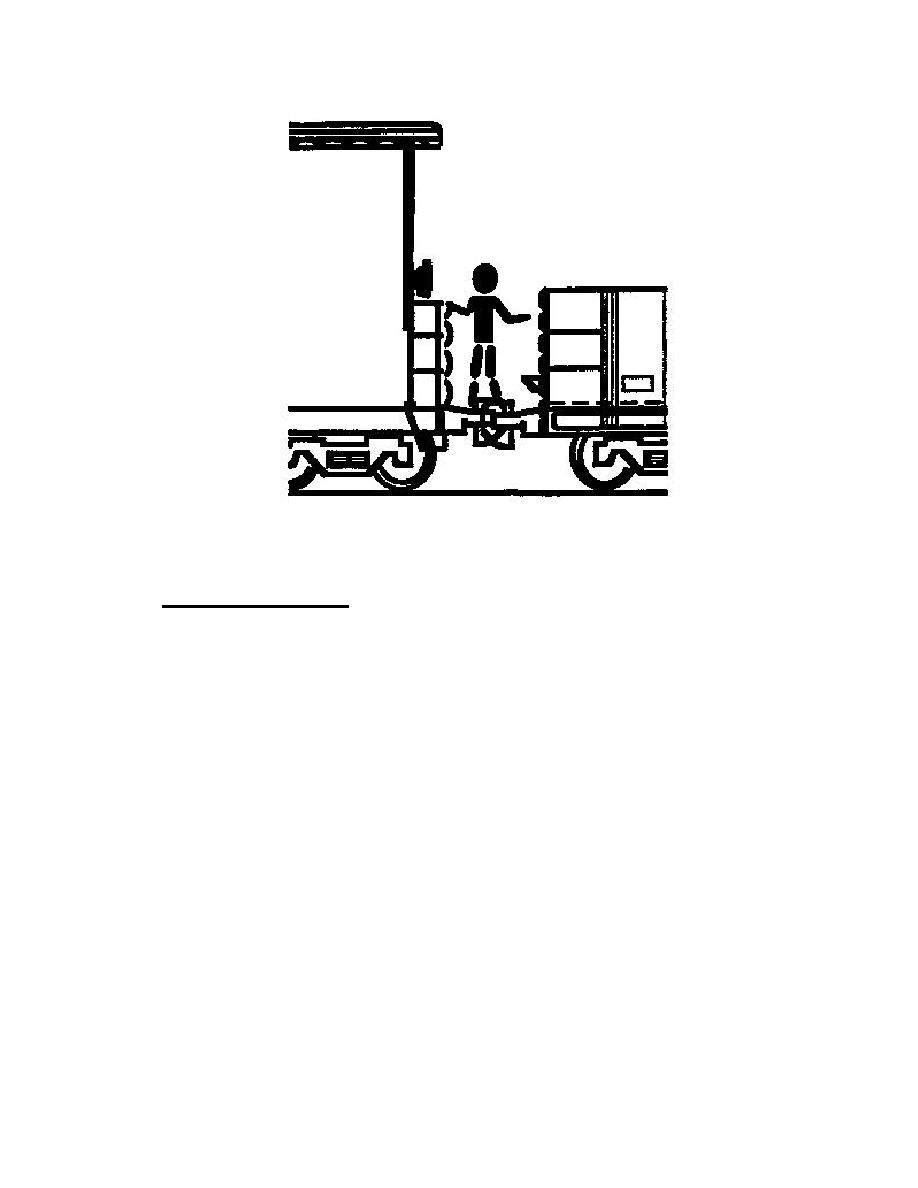 |
|||
|
|
|||
|
|
|||
| ||||||||||
|
|  Figure 3-4. Unsafe areas between coupler head and draft gear.
f. Switching Operations. Switching operations include coupling, uncoupling, coupling
air hoses, setting the hand brakes, releasing the hand brakes, chocking wheels, turnout
procedures, and derailer procedures.
(1) Coupling and uncoupling procedures. Observe the following when coupling or
uncoupling railcars:
No person other than a crew member shall couple or uncouple cars.
Before going between standing locomotives or railcars to couple or uncouple,
ensure slack has adjusted and train has stopped. If railcars are on a grade,
ensure they are secured (brakes set and wheels chocked).
When coupling railcars, the railcar or locomotive approaching shall be brought
to a full stop before reaching the railcar to be coupled. This distance between
the railcar or locomotive and the railcar to be coupled should be a minimum of
three (3) feet and a maximum of five (5) feet.
After the train has come to a full stop, open only one of the knuckles with the
cut lever. Stand clear of the knuckle since it could fall to the ground if the
knuckle pin is broken or missing. If it is necessary to adjust one of the
drawbars, follow the above procedures for moving between railcars. A ground
crew member shall signal the engineer to proceed at a slow speed to complete
the coupling.
3 - 7
|
|
Privacy Statement - Press Release - Copyright Information. - Contact Us |